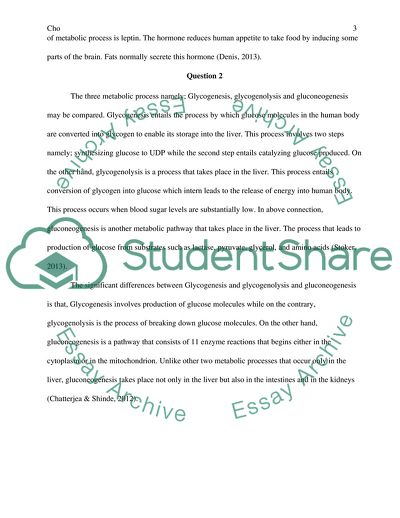CHO Essay Example | Topics and Well Written Essays - 500 words. https://studentshare.org/medical-science/1838595-glycogenesis-glycogenolysis-and-gluconeogenesis
CHO Essay Example | Topics and Well Written Essays - 500 Words. https://studentshare.org/medical-science/1838595-glycogenesis-glycogenolysis-and-gluconeogenesis.


